Quantum Angular Momentum
Concept Map
Quantum Angular Momentum is a fundamental concept in quantum mechanics, representing the rotational equivalent of linear momentum. It is characterized by discrete values and defined by two quantum numbers: the angular momentum quantum number (l) and the magnetic quantum number (m). These numbers determine the behavior of particles like electrons in atoms, influencing their energy levels and chemical bonds. The text delves into the historical development, practical applications, and techniques for solving quantum angular momentum problems.
Summary
Outline
Understanding Quantum Angular Momentum
Quantum Angular Momentum is a pivotal concept in quantum mechanics, representing the rotational analog of linear momentum. Unlike its classical counterpart, quantum angular momentum exhibits quantization, meaning it can only assume specific, discrete values. This property arises from the wave-like nature of particles in quantum mechanics. The angular momentum of a particle is characterized by two quantum numbers: the angular momentum quantum number (\( l \)), which can take on any integer value from 0 to \( n-1 \) (where \( n \) is the principal quantum number), and the magnetic quantum number (\( m \)), which ranges from \( -l \) to \( +l \). These quantum numbers are integral to defining the angular momentum states of particles, such as electrons in atoms.The Role of Angular Momentum in Quantum Systems
In quantum mechanics, angular momentum is described by operators that correspond to its components (\( \hat{L}_x, \hat{L}_y, \hat{L}_z \)) and its total magnitude (\( \hat{L}^2 \)). These operators obey specific commutation relations that reflect the constraints imposed by the Heisenberg Uncertainty Principle. Angular momentum is a conserved quantity in isolated quantum systems, playing a critical role in the behavior of atomic and subatomic particles. There are two forms of angular momentum: orbital angular momentum, related to the motion of particles around a point, and spin angular momentum, an intrinsic characteristic of particles. The conservation of the total angular momentum, which includes both orbital and spin, is a cornerstone of quantum mechanics.Historical Development of Quantum Angular Momentum Concepts
The concept of quantized angular momentum was first introduced by Niels Bohr in his model of the atom, which helped explain the discrete energy levels observed in atomic spectra. Later, the discovery of electron spin by George Uhlenbeck and Samuel Goudsmit added a new dimension to the understanding of angular momentum in quantum mechanics. Spin revealed that particles could possess intrinsic angular momentum that was not associated with any discernible motion in space. These discoveries were instrumental in the development of quantum mechanics and have had a profound impact on the field of physics.Understanding the Angular Momentum Quantum Number
The Angular Momentum Quantum Number (\( l \)) is a quantum number that specifies the orbital angular momentum of a particle within a quantum system, such as an electron in an atom. It determines the shape and number of angular nodes in the orbital, influencing the spatial distribution of the electron's probability density. The value of \( l \) ranges from 0 to \( n-1 \), where \( n \) is the principal quantum number associated with the energy level of the electron. The different values of \( l \) correspond to the s, p, d, and f orbitals, each with a unique shape and set of properties.The Importance of the Angular Momentum Quantum Number in Quantum Theory
The Angular Momentum Quantum Number plays a vital role in the quantum theory of atoms and molecules. It determines the energy levels available to electrons, the shapes of atomic orbitals, and the nature of chemical bonds formed between atoms. The angular part of the wave function, influenced by this quantum number, is described by Spherical Harmonics, which are essential mathematical functions used in solving the Schrödinger equation for systems with spherical symmetry. This quantum number is fundamental in predicting the chemical and physical properties of substances.Differentiating Quantum Angular Momentum and Orbital Angular Momentum
Quantum Angular Momentum encompasses the total angular momentum of a quantum system, including both orbital and spin components. Orbital Angular Momentum, on the other hand, refers specifically to the component of angular momentum due to the motion of particles around a central point, and is quantified by the Angular Momentum Quantum Number (\( l \)). The operators for Quantum Angular Momentum (\( \hat{L} \)) are subject to commutation relations that reflect the quantum mechanical restrictions on measuring certain properties simultaneously. In contrast, the Orbital Angular Momentum Quantum Number is derived from the solutions to the radial part of the Schrödinger equation and is not directly subject to these commutation relations.Practical Applications of Quantum Angular Momentum
Quantum Angular Momentum has significant practical applications in various scientific fields. In spectroscopy, it is essential for understanding the rotational spectra of molecules and their interaction with electromagnetic radiation. In the realm of quantum dots, angular momentum affects the behavior of excitons, which are bound states of electrons and holes. These properties influence the polarization and intensity of light emitted by quantum dots, making angular momentum a key factor in the design and analysis of optoelectronic devices.Techniques for Solving Quantum Angular Momentum Problems
Addressing problems in Quantum Angular Momentum typically involves the use of Operator Algebra and the application of Commutation Relations. The Angular Momentum operators (\( \hat{L}_x, \hat{L}_y, \hat{L}_z \)) are defined in terms of position and momentum operators and are non-commuting, which is a manifestation of the Heisenberg Uncertainty Principle. These operators' commutation relations are fundamental in determining the eigenstates and eigenvalues of Quantum Angular Momentum. Such mathematical tools are indispensable for understanding the atomic structure and the distribution of electrons in various quantum states.Key Takeaways on Quantum Angular Momentum
Quantum Angular Momentum and the Angular Momentum Quantum Number are essential concepts in quantum mechanics, each with distinct roles. Quantum Angular Momentum (\( \hat{L} \)) includes both orbital and spin components and is a conserved quantity in quantum systems. The Angular Momentum Quantum Number (\( l \)) quantifies the orbital angular momentum of particles and is crucial for determining the shape and orientation of electron orbitals, which in turn influence chemical bonding and reactivity. Mastery of these concepts is fundamental to our understanding of the atomic and molecular world and has practical implications across various scientific and technological fields.Show More
Definition of Quantum Angular Momentum
Classical vs. Quantum Angular Momentum
Quantum Angular Momentum exhibits quantization and is characterized by two quantum numbers
Angular Momentum Quantum Numbers
Angular Momentum Quantum Number (\( l \))
The Angular Momentum Quantum Number determines the shape and number of angular nodes in the orbital of a particle
Magnetic Quantum Number (\( m \))
The Magnetic Quantum Number ranges from \( -l \) to \( +l \) and is integral to defining the angular momentum states of particles
Operators for Quantum Angular Momentum
Angular Momentum is described by operators that correspond to its components and obey specific commutation relations
Role of Quantum Angular Momentum in Quantum Mechanics
Conservation of Angular Momentum
Angular Momentum is a conserved quantity in isolated quantum systems and plays a critical role in the behavior of atomic and subatomic particles
Forms of Angular Momentum
Orbital Angular Momentum
Orbital Angular Momentum is related to the motion of particles around a point and is quantified by the Angular Momentum Quantum Number
Spin Angular Momentum
Spin Angular Momentum is an intrinsic characteristic of particles and is a cornerstone of quantum mechanics
Historical Significance
The concept of quantized angular momentum was first introduced by Niels Bohr and later expanded upon by the discovery of electron spin by George Uhlenbeck and Samuel Goudsmit
Applications of Quantum Angular Momentum
Importance in Atomic and Molecular Systems
The Angular Momentum Quantum Number plays a vital role in determining the energy levels, shapes of orbitals, and chemical bonding in atoms and molecules
Practical Applications
Spectroscopy
Quantum Angular Momentum is essential for understanding the rotational spectra of molecules and their interaction with electromagnetic radiation
Quantum Dots
Angular Momentum affects the behavior of excitons in quantum dots, influencing the polarization and intensity of light emitted by these devices
Mathematical Tools
Operator Algebra and Commutation Relations are essential for solving problems related to Quantum Angular Momentum





